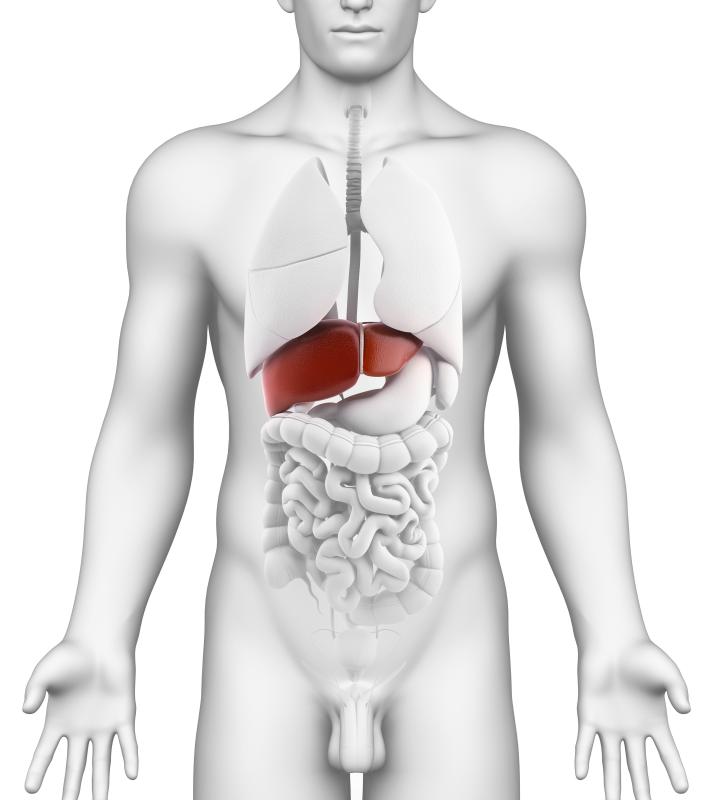At WiseGEEK, we're committed to delivering accurate, trustworthy information. Our expert-authored content is rigorously fact-checked and sourced from credible authorities. Discover how we uphold the highest standards in providing you with reliable knowledge.
What is Fibrinolysis?
Fibrinolysis is a process that occurs inside the body to break down blood clots. This prevents blood clots from remaining in place and growing and allows the body to clear fragments of clots safely to avoid risks such as strokes and damage to the heart that can be caused by big floating clots. Primary fibrinolysis occurs naturally as the body clears clots that are no longer necessary once the underlying tissue is healed. Secondary fibrinolysis can be induced with medications or occur as the result of stress or disease.
When blood clots, it forms around a matrix of fibrin, a protein that is released during coagulation. The fibrin creates a framework for blood to clot around for the purpose of sealing a hole or covering a wound. Left in place, however, the clot could lead to the development of problems. In fibrinolysis, an enzyme called plasmin cuts through the fibrin to break the clot apart into smaller pieces that can be expelled by the body.

The precursor to plasmin, plasminogen, is produced in the liver. When blood starts to clot, plasminogen is locked inside the clot along with an activator that can turn the plasminogen into plasmin. As healing progresses, the activator is released to create plasmin to break up the clot. The body can also use inhibitors that interfere either with the action of the activator or the plasmin to slow fibrinolysis. This keeps the breakup of blood clots in balance.

The soluble pieces of the blood clot are moved through the liver. These components are broken down into parts for reuse or disposal. In people with clotting disorders or liver damage, it may be difficult for the body to process blood clots and complications can develop. These can include impairments in liver function that limit the ability to metabolize other chemical compounds that normally pass through the liver.

Sometimes, doctors may medicate patients with drugs that trigger fibrinolysis. This is done when a blood clot poses a threat to health, such as when there is a clot around the heart or near the brain. The drugs break up the clot so that it can be eliminated by the body. Medications to prevent fibrinolysis can also be prescribed for patients when their blood clots break up too quickly. Testing can be used to check for the levels of associated enzymes in the blood to learn more about why clots are forming or breaking up too quickly.
AS FEATURED ON:
AS FEATURED ON:


















Discussion Comments
@David09 - I doubt you’d get much encouragement from your doctor for the dietary approach, but I do think you may be onto something.
Unfortunately the medical profession is trained only in the use of laboratory tested drugs. My dad suffered a stroke as a result of blood clotting and they put him on the usual cocktail of blood thinning and statin drugs.
I certainly can’t say the stuff doesn’t work, but it seems that he has to take an awful lot of it. Of course, he hasn’t really changed his diet either, which I believe is part of the problem.
But you’re right; the body has its own built in mechanism to fight the disease, and if we could just let the body do its thing, I believe it would heal itself.
I’ve always believed that nature is the greatest healer, and this article confirms that. I had never known that the body had its own mechanism for clearing blood clots. I thought only medication could do that.
It’s good to know that the body acts in its own defense to clear clots and restore the blood vessels to their normal state where blood can flow freely and unobstructed.
It’s fascinating to learn that the thing which “unclogs” the clot, so to speak, is buried inside the clot itself; it's the plasminogen which releases the plasmin.
This is amazing. Since this is a built in healing mechanism, I think it might be possible to facilitate its curative powers by following a certain diet.
Perhaps a vegetarian diet or something like that would help to fight the clot and trigger the blood coagulation fibrinolysis. I am not a doctor, but that’s just my two cents.
Post your comments